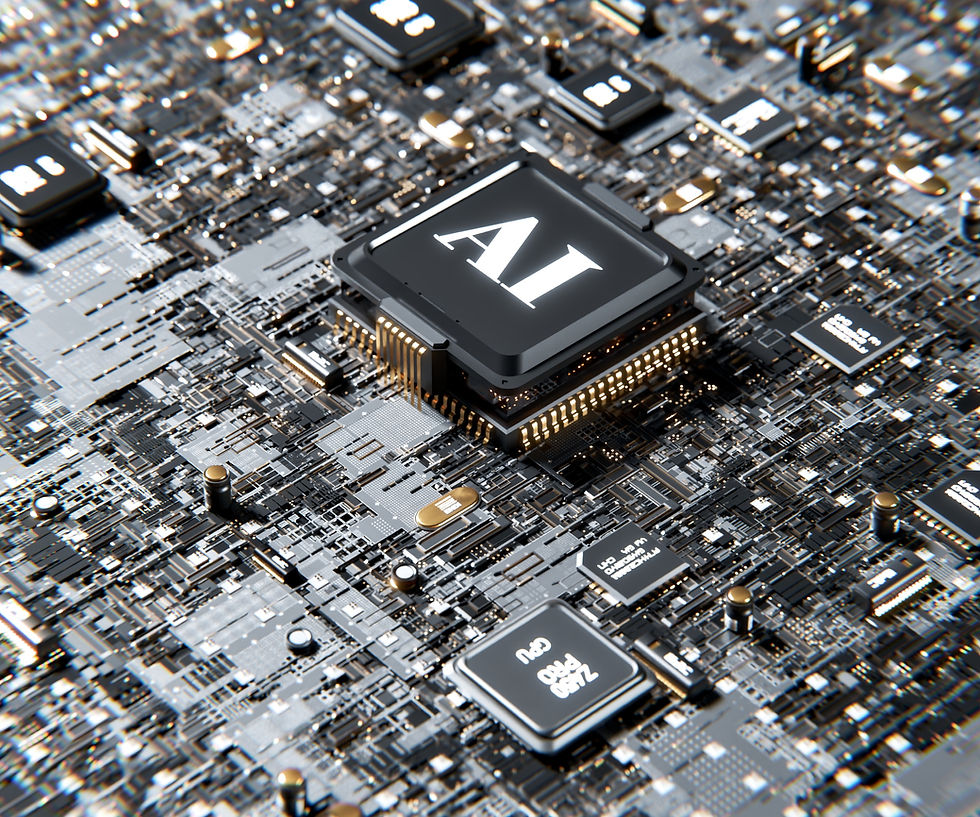Integrating Generative AI into Small and Mid-Sized Architecture Firms: A Path to Innovation and Efficiency
- Mathew Kaplan
- Mar 4
- 4 min read

The architectural landscape is undergoing a significant transformation with the advent of generative artificial intelligence (AI). For small and mid-sized architecture firms, embracing this technology can lead to enhanced design capabilities, streamlined operations, and a competitive edge in a rapidly evolving market. This blog post delves into the practical applications of generative AI in architecture and offers insights into how firms can effectively integrate this technology into their workflows.
Understanding Generative AI in Architecture
Generative AI refers to algorithms that can create new content or solutions by learning from existing data. In architecture, this means AI systems can analyze vast amounts of design data to generate innovative building forms, optimize spatial layouts, and even suggest sustainable materials and construction methods. Unlike traditional design tools, generative AI offers a collaborative approach, where architects set parameters and the AI provides a range of design options, fostering a symbiotic relationship between human creativity and machine intelligence.
Practical Applications for Small and Mid-Sized Firms
1. Design Exploration and Optimization
Generative AI enables architects to rapidly explore numerous design alternatives. By inputting specific constraints—such as site conditions, budget limits, and regulatory requirements—AI can produce a variety of design options that meet these criteria. This accelerates the conceptual phase and allows firms to present clients with diverse solutions, enhancing client engagement and satisfaction.
2. Sustainability and Energy Efficiency
AI can analyze environmental data to suggest designs that maximize natural light, improve ventilation, and reduce energy consumption. For instance, AI-driven tools can optimize building orientation and facade design to enhance energy efficiency, aligning with the growing demand for sustainable architecture.
3. Cost Estimation and Budget Management
Integrating AI into the budgeting process allows for more accurate cost estimations by analyzing historical data and current market trends. This reduces the risk of budget overruns and ensures financial feasibility, which is crucial for smaller firms operating with limited resources.
4. Code Compliance and Risk Mitigation
Generative AI can assist in ensuring designs comply with local building codes and regulations by cross-referencing design proposals against regulatory databases. This proactive approach minimizes the risk of non-compliance, avoiding costly redesigns and project delays.
5. Enhanced Collaboration
AI-powered platforms facilitate seamless collaboration among project stakeholders by providing real-time updates and data sharing. This ensures all parties are aligned, reducing miscommunication and fostering a more integrated design process.
Implementing Generative AI: A Step-by-Step Guide
1. Assess Current Capabilities
Begin by evaluating your firm's existing technological infrastructure and identifying areas where AI can have the most impact. This assessment will guide the selection of appropriate AI tools and platforms.
2. Invest in Training and Development
Equip your team with the necessary skills to work alongside AI tools. This may involve training sessions, workshops, or hiring new talent with expertise in AI and data analytics.
3. Start with Pilot Projects
Implement AI on a small scale to test its efficacy and address any challenges. Pilot projects provide valuable insights and build confidence among team members.
4. Collaborate with Technology Partners
Partnering with AI solution providers or tech startups can offer customized tools tailored to your firm's specific needs, ensuring a smoother integration process.
5. Monitor and Evaluate
Continuously assess the performance of AI tools and their impact on your projects. Gather feedback from your team to make necessary adjustments and improvements.
Challenges and Considerations
While the benefits are substantial, integrating generative AI comes with challenges:
- Data Privacy and Security: Ensure that client data and proprietary designs are protected against breaches.
- Initial Investment: The cost of AI tools and training can be significant. However, the long-term gains in efficiency and innovation often justify the initial expenditure.
- Cultural Shift: Adopting AI requires a cultural change within the firm, embracing technology as a collaborator rather than a replacement.
Case Study: Zaha Hadid Architects
A notable example of AI integration is Zaha Hadid Architects (ZHA), which has embraced generative AI to enhance its design processes. The firm employs AI to generate numerous design options quickly, improving productivity in both the initial design and mid-stage preparation phases. This integration has notably increased ZHA's ability to compete and win new projects by producing high-quality renderings within tight deadlines.
The Future Landscape
As generative AI continues to evolve, its integration into architectural practices will become more seamless and intuitive. Future developments may include AI-driven construction methods, real-time adaptive design adjustments based on user feedback, and more personalized architectural solutions. Firms that adapt to these advancements will be better positioned to meet client expectations and navigate the complexities of modern architectural projects.
Conclusion
For small and mid-sized architecture firms, generative AI offers a pathway to innovation, efficiency, and growth. By thoughtfully integrating this technology into their workflows, firms can enhance their design capabilities, improve collaboration, and optimize project outcomes. While challenges exist, the potential benefits far outweigh the risks, making AI an essential tool for the future of architectural practice. The firms that embrace AI today will be the leaders of tomorrow, shaping a more dynamic and technologically advanced industry.




Comments